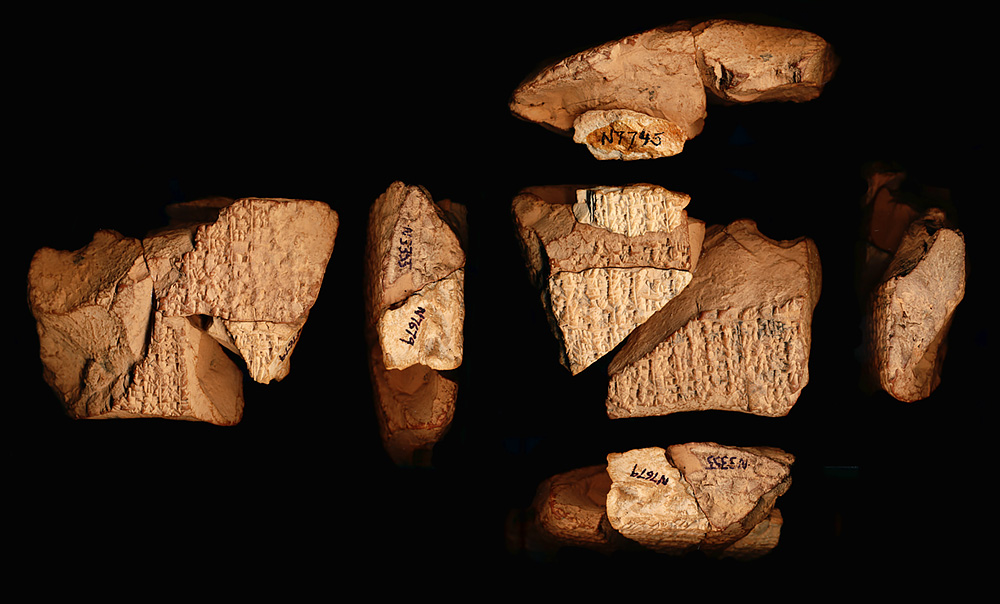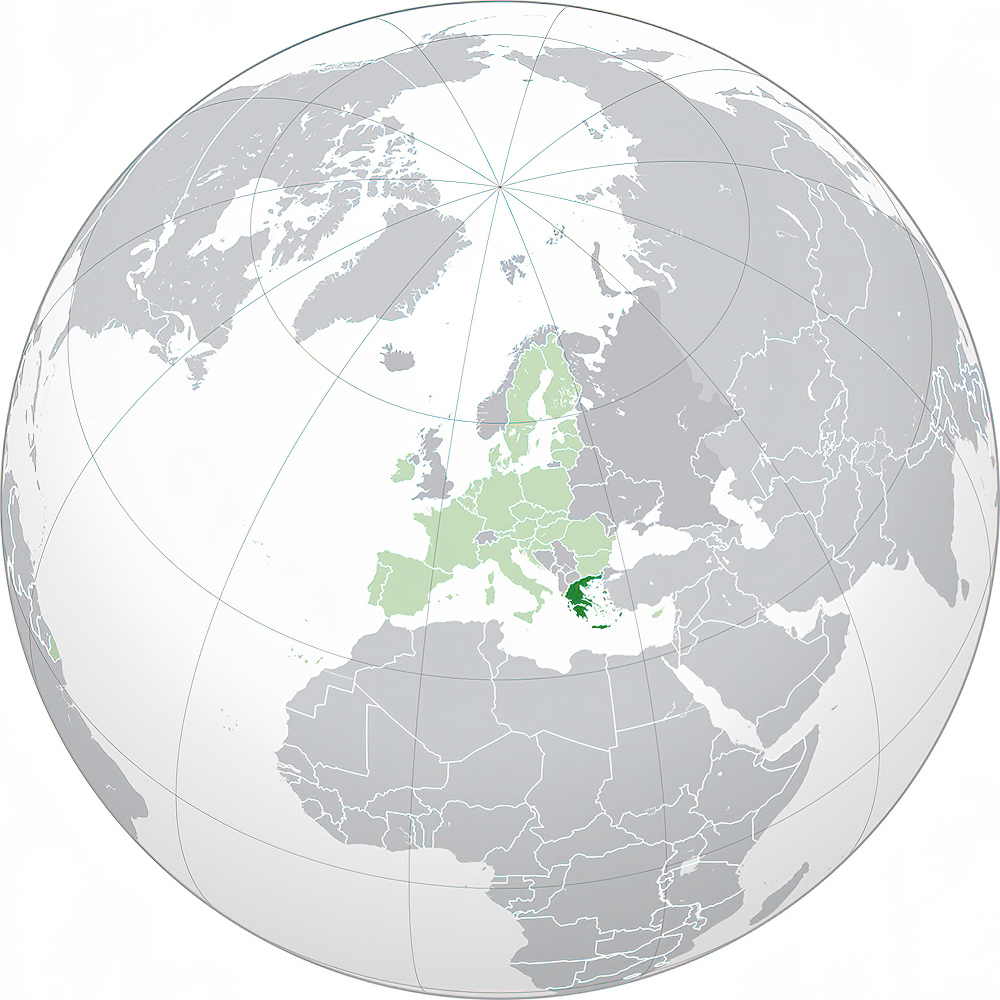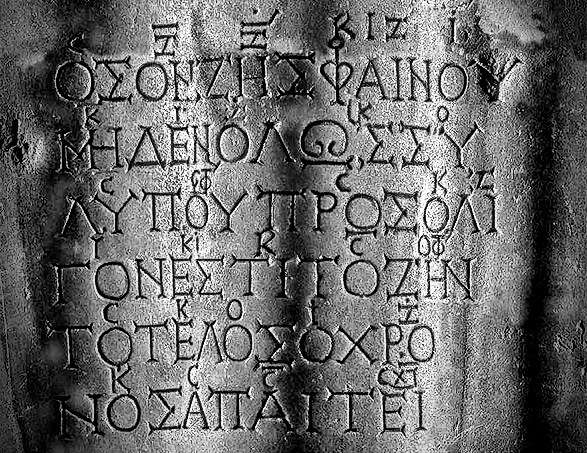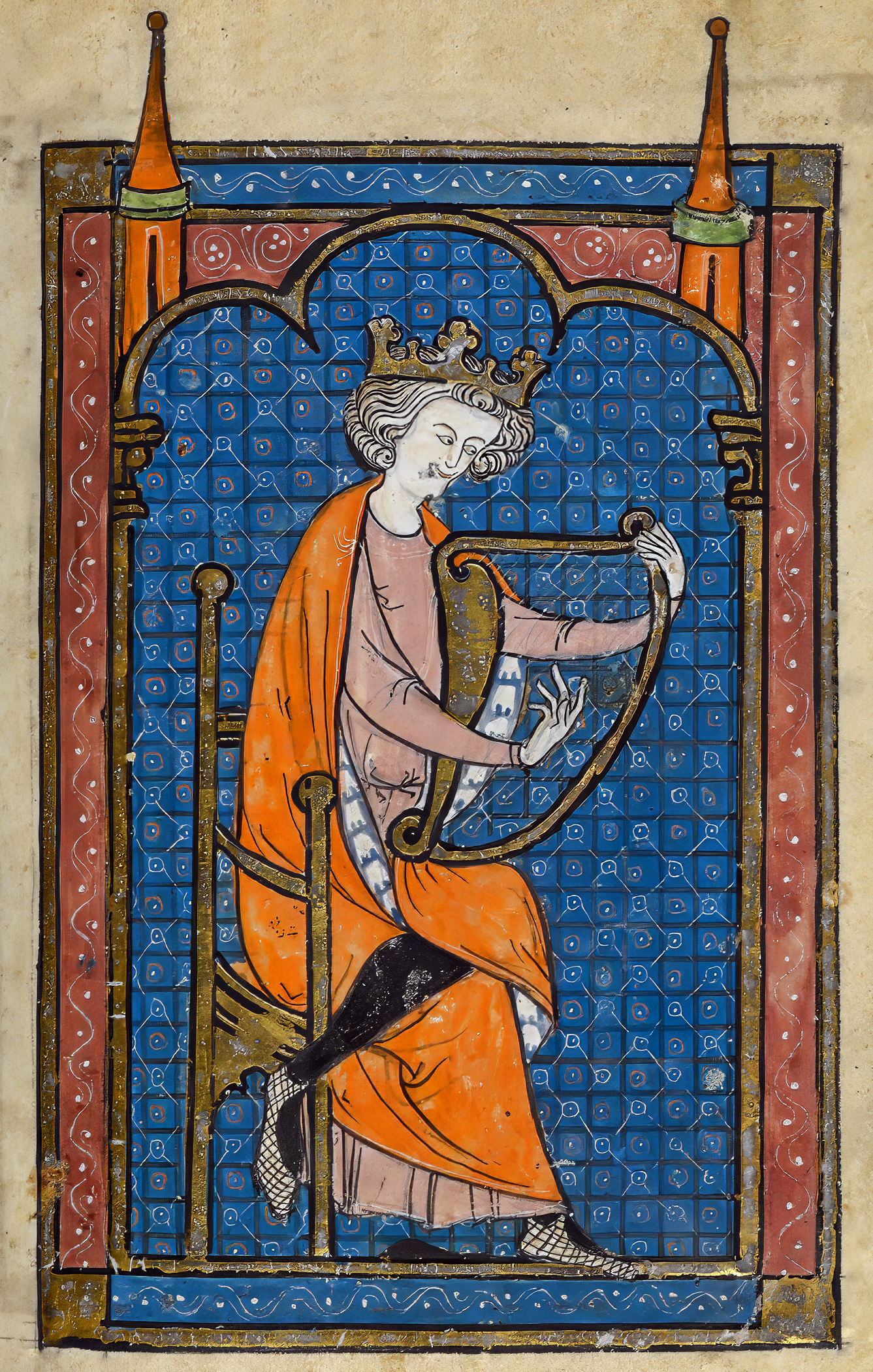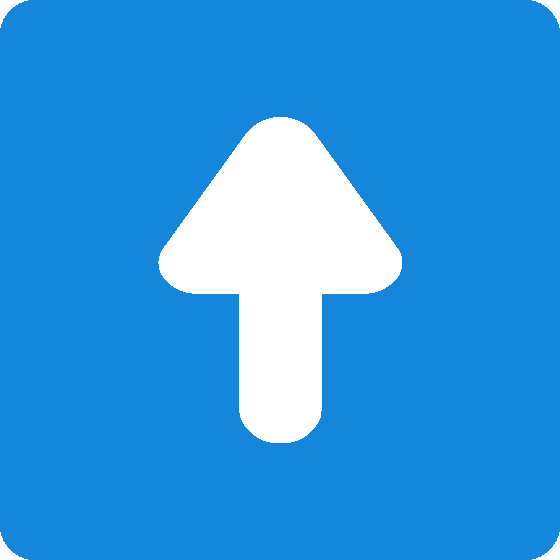8 | Musical ElementsAncient & Non-Western Music NotationPeter Kun Frary
.
|
Music played a significant role in ancient Greek theatre, religion, civil ceremonies and epic poetry. There are surviving examples of ancient Greek music notation, numerous literary references, and depictions on art, pottery and tombs. Music notation was developed in Greece during the sixth century BCE. Symbols were placed above song text to indicate pitch. The Seikilos Epitaph, found near Ephesus, is the oldest known complete Greek song in musical notation. |
Seikilos Epitaph Song | Greece, c. 100 | Nationalmuseet

Seikilos Epitaph Song Translation
Seikilos Epitaph detail on right: small symbols above the text indicate musical pitches. |
The Seikilos Epitaph Song is performed here with voice and Greek lyre:
Seikilos Epitaph Song | Greece, c. 100 | (2:19)
Interpretation of ancient Sumerian and Greek musical scores is challenging. Why? Most ancient notation systems merely indicate pitch and depend on musicians steeped in the music of the time to add tempo, rhythm and stylistic elements. Once the chain of oral transmission of style is broken, we can only approximate what the music sounded like.
![]()
Mnemonic Symbols
Mnemonic music notation systems use symbols above or below text to prompt memorized melodic motives, phonetics and phrasing. Ancient Hebrew, Byzantine and Roman Catholic chant was notated using mnemonic symbols. In the Roman Catholic Church, these symbols were called neumes, hence Neumatic notation.
Performance of music notation based on mnemonic symbols depend on human memories and oral traditions. Once the chain of transmission is broken, e.g., destruction of the host culture, the sounds of mnemonic music symbols are lost.
King David Playing Harp | North French Hebrew Miscellany (c. 1277-86) | David was known to be an accomplished harpist (1 Samuel 16) | British Museum
Israel
Music was important in ancient Israel for worship, expression and relaxation. Thus, the Hebrews developed a sophisticated form of mnemonic music notation for their worship services. Indeed, Hebrew cantillation, chanting the Hebrew Bible (Tanakh), is one of the few mnemonic music systems with an unbroken chain of transmission from the Middles Ages.
Israel | Israel's borders have varied considerably during the past several millennia. Depicted is modern Israel. | Wikimedia Commons
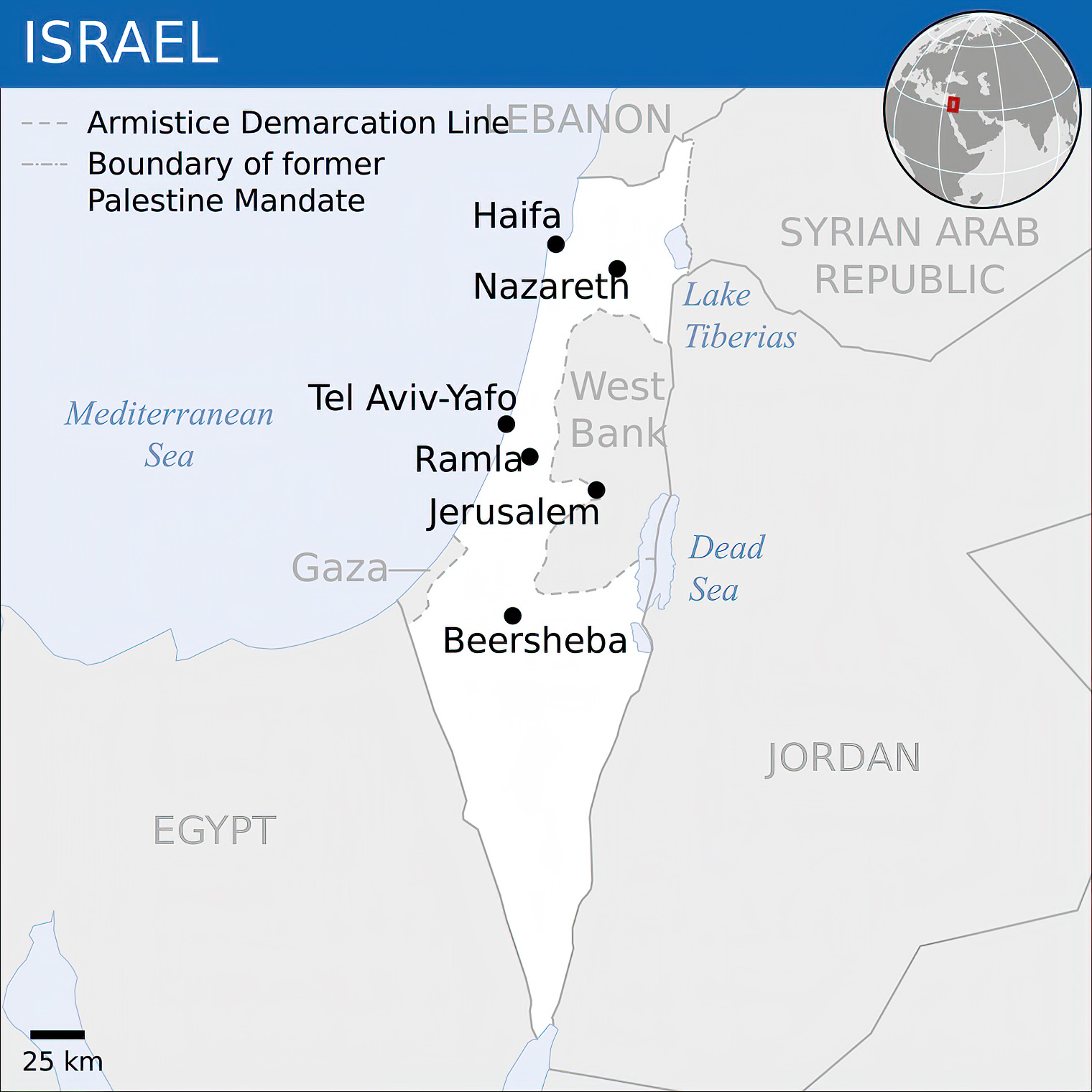
Hebrew mnemonic symbols are called te'amim (טעמים), and indicate melodic motives, not individual notes. Scholars have transcribed te'amim into staff notation for modern teaching and future preservation.
Hebrew Cantillation | Ashkenazi cantillation of a Torah phrase read from te'amim | Wikimedia Commons
Hebrew Trope | Let the waters be collected. Genesis 1:9 | The blue marks are mnemonic musical symbols. Red symbols are phonetics. | Wikimedia Commons

China
The oldest references to Chinese music notation are inscriptions on musical instruments in the Tomb of Marquis Yi of Zeng (d. 433 BCE), although no musical compositions survive from that time.
China | Chinese history encompasses nearly 5000 years | Wikimedia Commons

The earliest surviving Chinese musical work is Jieshi Diao Youlan (碣石調·幽蘭), composed by an unknown musician during the Tang Dynasty (c. 600-900) for the guqin (古琴 ), a seven-string Chinese zither. The notation system used (see below) is called Wenzi Pu, literally meaning "written notation."
Jieshi Diao Youlan (碣石調·幽蘭) | "Solitary Orchid" in the Jieshi Tuning (Jieshidiao Youlan) (碣石調幽蘭, kessekichōyūran) vol. 5. | Tokyo National Museum
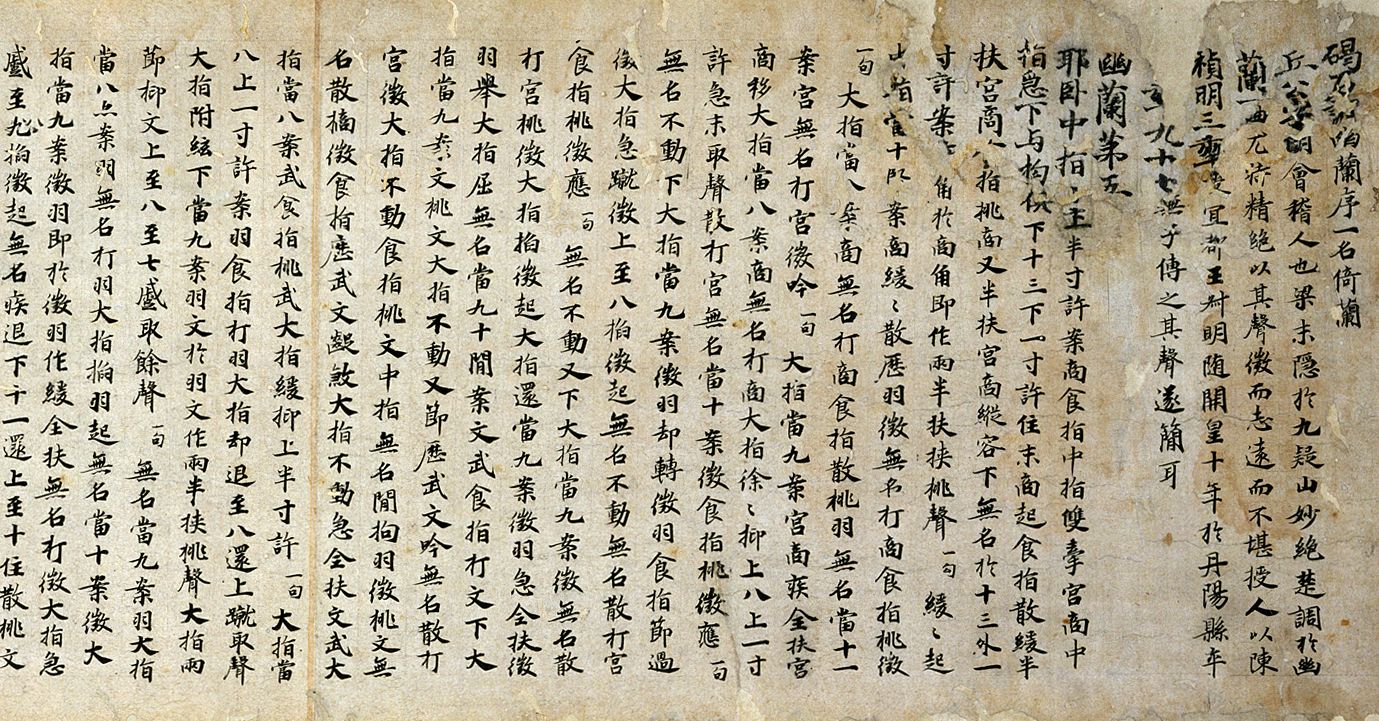
Solitary Orchid | China, c. 700-800 | Liu Li (幽兰 - 刘丽), guqin (11:20)
An alternate to Wenzi Pu, Gongche, eventually became popular. Gongche also dates from the Tang Dynasty and is still used for traditional Chinese music. Unlike ancient Middle Eastern and European notation systems, Gongche contains rhythmic detail, albeit not as complete as modern Western staff notation. Because traditional Chinese music has maintained an unbroken legacy across centuries, music written in Gongche may be performed today with accuracy and stylistic authenticity.
Gongche (1864) | Large characters are guqin tablature, smaller characters are Gongche (pitches), and dashes are rhythmic accents. | Wikimedia Commons
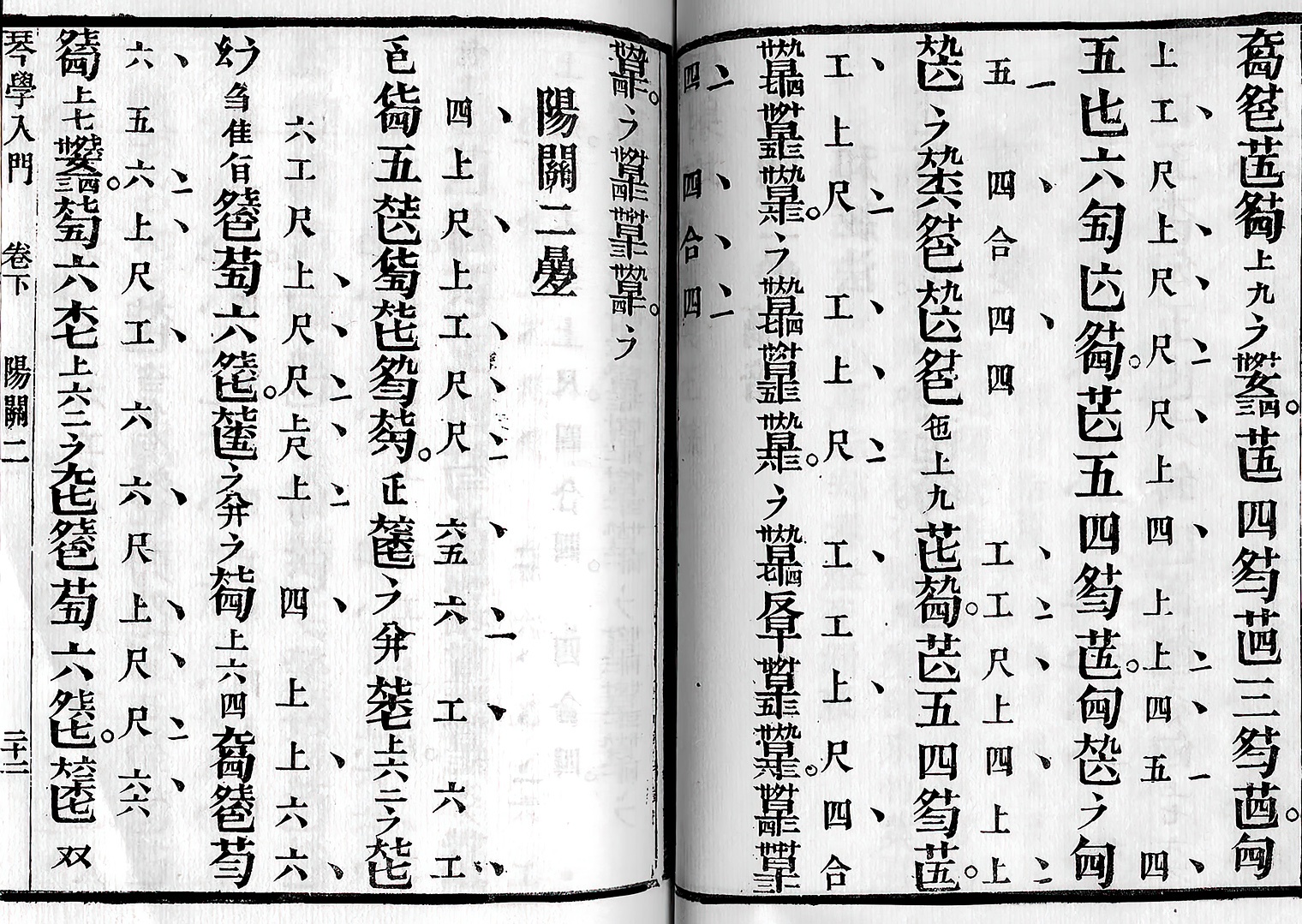
Although some ancient notation systems remain in use, most of the world has standardized on Western staff notation.
Prince Lu Guqin (古琴 ) | Gugin once belonging to Zhu Changfang (1608-1646), the last prince of Lu (Ming dynasty). Chinese nobles were often accomplished musicians and music scholars. | Metropolitan Museum of Art
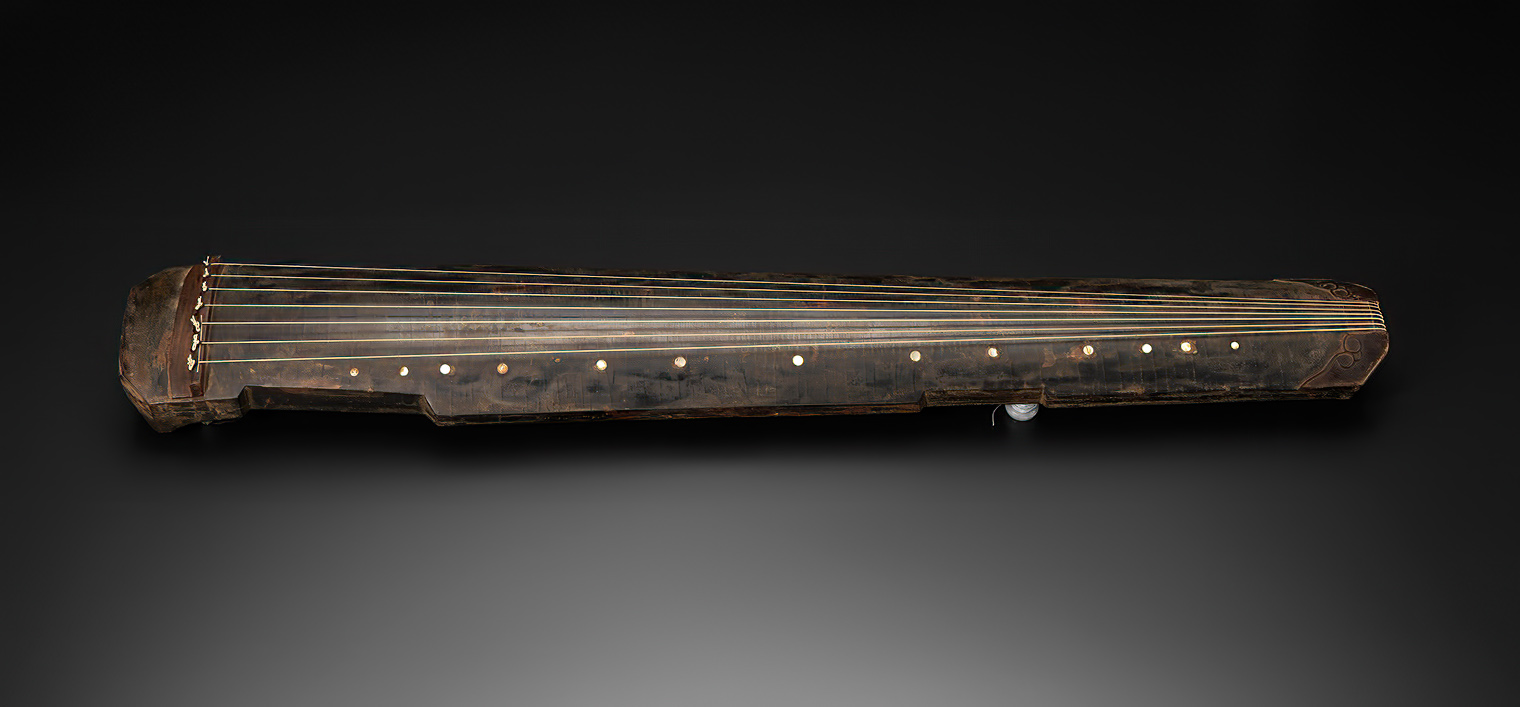
Vocabulary
cuneiform, lyre, mnemonic symbols, neume, Hebrew cantillation, Wenzi Pu, guqin, Gongche, te'amim
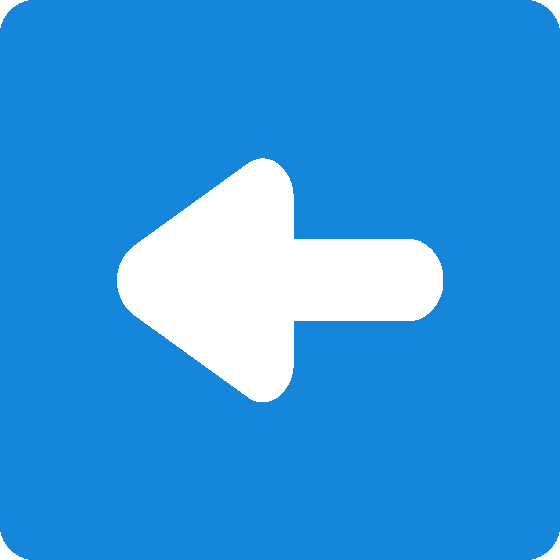 |
 |
©Copyright 2018-25 by Peter Kun Frary | All Rights Reserved



